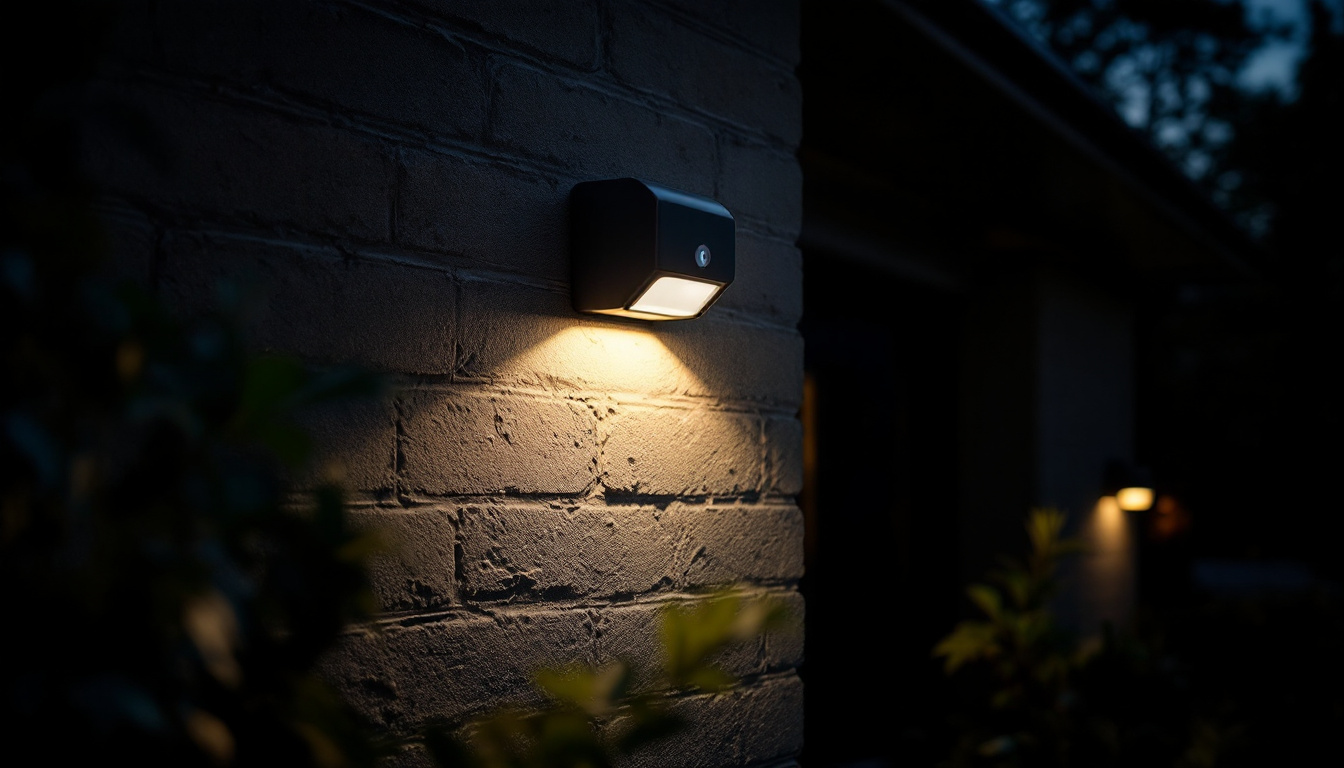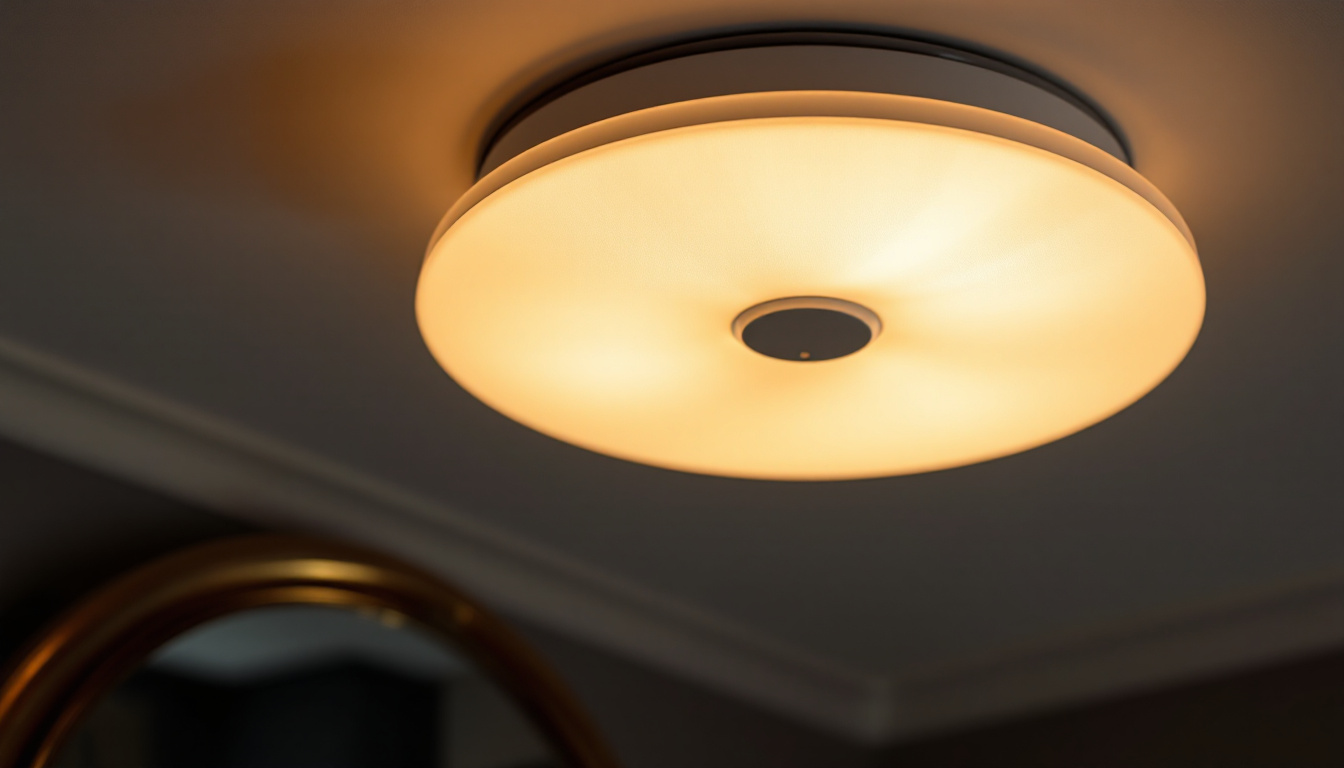
In the ever-evolving landscape of lighting technology, motion sensing lights have emerged as a pivotal component for both residential and commercial applications. For lighting contractors, understanding the nuances of these systems is essential not only for installation but also for advising clients on the best solutions tailored to their needs. This article delves into the critical aspects of motion sensing lights, offering valuable insights that can enhance the services provided by lighting professionals.
Motion sensing lights utilize advanced technology to detect movement within a designated area. This functionality is primarily achieved through various types of sensors, each with unique characteristics and applications. The primary types of sensors include passive infrared (PIR), microwave, and dual technology sensors.
PIR sensors are the most common type of motion detectors used in lighting applications. They work by detecting changes in infrared radiation, which is emitted by objects based on their temperature. When a warm body, such as a person or animal, moves within the sensor’s range, the device activates the lighting system.
One of the advantages of PIR sensors is their energy efficiency. They only activate lights when motion is detected, significantly reducing energy consumption. However, they do have limitations, such as their inability to detect motion through solid objects and their sensitivity to environmental conditions, which can affect performance. For instance, extreme temperatures or heavy rain can impede the sensor’s ability to accurately detect motion, making it essential to consider the installation environment when selecting these sensors.
Microwave sensors operate on a different principle, emitting microwave signals that bounce off objects in their path. When movement occurs, the reflected signals change, prompting the sensor to activate the lights. These sensors are effective in larger spaces and can detect motion through walls and obstacles.
While microwave sensors offer greater coverage and versatility, they can be more susceptible to false alarms caused by environmental factors, such as wind or moving foliage. Therefore, careful placement and calibration are crucial for optimal performance. Additionally, these sensors are often used in commercial settings, where their ability to cover expansive areas can enhance security and convenience, ensuring that lights activate in response to any movement, thus deterring potential intruders.
Combining the features of both PIR and microwave sensors, dual technology sensors provide enhanced reliability. By requiring both types of detection to trigger the lights, these systems minimize false activations while maintaining effective motion detection.
For contractors, recommending dual technology sensors can be a selling point, especially in environments where reliability is paramount, such as in security applications or high-traffic areas. These sensors are particularly beneficial in settings like parking lots, where they can help reduce energy costs while ensuring that lights are only activated when necessary. Furthermore, the integration of dual technology sensors into smart home systems allows for advanced features, such as remote monitoring and control, enabling homeowners to manage their lighting systems efficiently and effectively from their smartphones or other devices.
Motion sensing lights have a wide range of applications across various settings, making them an attractive option for contractors to offer their clients. From residential homes to commercial properties, the versatility of these systems can meet diverse lighting needs.
In residential settings, motion sensing lights are often used for outdoor security and convenience. Homeowners appreciate the added safety of having lights automatically illuminate pathways or entryways when someone approaches. This not only deters potential intruders but also enhances the overall ambiance of the property.
Additionally, interior motion sensing lights can be beneficial in areas such as hallways, bathrooms, and garages. These lights provide convenience for homeowners, allowing them to move freely without fumbling for switches, especially in low-light conditions.
In commercial environments, motion sensing lights serve multiple purposes, including security, energy savings, and improved employee productivity. For instance, in warehouses and retail spaces, these lights can activate when employees or customers enter, ensuring well-lit areas that enhance safety and visibility.
Moreover, energy efficiency is a significant concern for businesses. Motion sensing lights help reduce electricity costs by ensuring that lights are only on when necessary. This is particularly important in large facilities where lights can be left on for extended periods.
In industrial settings, motion sensing lights play a crucial role in safety and operational efficiency. Factories and manufacturing plants often have large, open spaces where workers may move around frequently. Installing motion sensing lights in these areas ensures that workspaces remain well-lit without wasting energy.
Furthermore, in hazardous environments, such as chemical plants or construction sites, motion sensing lights can enhance safety by providing illumination only when needed, reducing the risk of accidents associated with darkness.
For lighting contractors, the installation of motion sensing lights involves several critical considerations to ensure optimal performance and client satisfaction. Understanding these factors can significantly impact the success of a project.
The placement of motion sensors is crucial for their effectiveness. Sensors should be installed at an appropriate height and angle to maximize their detection range. For PIR sensors, a height of approximately 6 to 8 feet is typically recommended, while microwave sensors may require different placements based on their specifications.
Additionally, contractors should consider the environment in which the sensors will be installed. Factors such as obstructions, temperature variations, and potential sources of interference can all affect sensor performance. Conducting a site assessment before installation can help identify the best locations for sensors.
Many motion sensing lights come with adjustable settings, allowing contractors to customize their performance based on specific client needs. Features such as sensitivity adjustments, time delay settings, and ambient light sensors can enhance the functionality of the lighting system.
Educating clients about these adjustable features can lead to increased satisfaction and a better overall experience. For example, a client may prefer a longer time delay in a garage setting, while a shorter delay may be more suitable for an outdoor pathway.
As smart home technology continues to gain popularity, integrating motion sensing lights with smart systems can be a significant selling point for contractors. Many modern motion sensing lights can connect to home automation systems, allowing users to control their lighting remotely or set specific schedules.
Promoting the benefits of smart integration can help contractors differentiate their services and appeal to tech-savvy clients. Additionally, educating clients on how to use these systems can lead to greater satisfaction and potential referrals.
Regular maintenance and troubleshooting are essential aspects of ensuring the longevity and effectiveness of motion sensing lights. Contractors should provide clients with guidance on how to maintain their systems and address common issues that may arise.
Dust and debris can accumulate on sensors over time, potentially impacting their performance. Contractors should recommend regular cleaning of the sensor lenses and surrounding areas to ensure optimal functionality. This is particularly important for outdoor sensors, which may be exposed to the elements.
Providing clients with simple cleaning instructions can empower them to take care of their systems, reducing the likelihood of service calls for minor issues.
Contractors should educate clients about common problems that can arise with motion sensing lights, such as false activations or failure to activate. Understanding the causes of these issues can help clients troubleshoot effectively before seeking professional assistance.
For instance, false activations may be caused by pets, moving branches, or even passing cars. By educating clients on these potential triggers, they can adjust their settings or sensor placement accordingly.
While many issues can be resolved through basic troubleshooting, there are times when professional assistance is necessary. Contractors should inform clients about signs that indicate a need for service, such as persistent failure to activate or unusual behavior from the lighting system.
Establishing a good relationship with clients and being available for follow-up service can enhance customer satisfaction and lead to repeat business.
As technology continues to advance, the future of motion sensing lights holds exciting possibilities for contractors and clients alike. Staying informed about emerging trends can help contractors remain competitive in the market.
Future developments in sensor technology may lead to even more sophisticated motion detection capabilities. Innovations such as machine learning algorithms could enable sensors to learn from their environments, reducing false activations and improving detection accuracy.
Contractors who stay ahead of these trends can offer clients cutting-edge solutions that enhance their lighting systems’ efficiency and reliability.
The Internet of Things (IoT) is transforming how devices communicate and operate. Motion sensing lights that integrate with IoT technology can provide users with real-time data and analytics about their lighting usage.
Contractors should consider the potential of IoT integration as a selling point, emphasizing the convenience and control it offers clients. This can include features such as remote monitoring, energy usage tracking, and automated adjustments based on occupancy patterns.
As sustainability becomes a priority for many consumers, motion sensing lights can play a significant role in reducing energy consumption and minimizing environmental impact. Future trends may focus on developing more energy-efficient sensors and lighting solutions that align with eco-friendly practices.
Contractors who prioritize sustainability in their offerings can attract environmentally conscious clients and contribute to a greener future.
Motion sensing lights represent a dynamic and essential aspect of modern lighting solutions. For lighting contractors, understanding the technology, applications, installation considerations, and future trends is crucial for providing exceptional service and meeting client needs.
By staying informed and adapting to the evolving landscape of motion sensing technology, contractors can enhance their offerings, improve client satisfaction, and establish themselves as leaders in the industry. As the demand for energy-efficient and convenient lighting solutions continues to grow, motion sensing lights will undoubtedly remain at the forefront of lighting innovation.
Ready to elevate your lighting installations with the latest in motion sensing technology? Look no further than LumenWholesale, where we provide lighting contractors with the highest quality, spec-grade lighting products at unbeatable wholesale prices. Say goodbye to local distributor markups and hello to superior lighting solutions that meet the highest industry standards. With LumenWholesale, bulk buying is a breeze, thanks to our free shipping policy, ensuring you get premium lighting at the best value — all without hidden fees or compromises. Don’t miss out on the perfect blend of quality, affordability, and convenience. Wholesale Lighting at the Best Value is just a click away. Enhance your service offerings and delight your clients with the efficiency and reliability of LumenWholesale products.

Discover expert insights into the world of flush mount lamps with our guide on lighting contractors’ best practices.

Discover how undercounter LED lights can transform your projects and elevate your business as a lighting contractor.

Discover expert tips on selecting the perfect flush mount ceiling light for your kitchen.

Discover how lighting contractors can enhance their projects and boost client satisfaction with strategic under-cupboard lighting solutions.